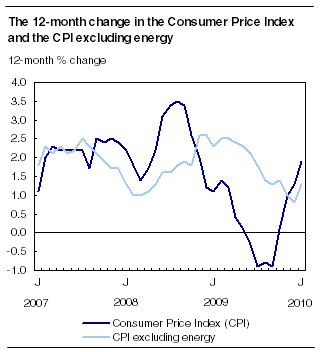
>
The Fed’s discount rate hike to .75 from .50 is necessary due to surging inflation the past few months. At this point, the Fed move is a warning to the Street to stop inflating commodities and stocks and bashing sovereign debt. If you want to temper the sovereign debt crisis, either remove the juice or hike the price of the juice . . . Perhaps the pathetic 30-year auction last week forced the Fed to action.
We don’t know if the Fed is smart enough to realize that commodities are percolating because speculators, hedge funds and CTAs are loading up for the seasonal upward bias for gasoline and grains. But if the Fed is aware of this dynamic, they realize that they must stop speculators from their usual spring buying binge in commodities – especially gasoline because of its political impact.
Global solons have bet the ranch on the concept that inflation is needed to thwart deflation and modest inflation would create jobs and income for the masses. That has not occurred. What has occurred is escalating inflation but jobs and income remain stagnant. Ergo the misery index is increasing.
Some central bank officials at the Fed and MPC have openly voiced concern that the record credit creation is seeding a new asset bubble and inflation. India and China have been hiking rates & reserves requirements. The Fed is due to exit its MBS monetization next month.
But as we keep harping, equities ‘get it last’ and traders ignore bad news or fundamentals until the situation becomes dire. This is due to two decades of inculcated bullishness on central bank largesse.
A variety of Fed officials surfaced last night to assuage market concern about the Fed’s discount rate hike. Obviously they all received talking points because of the common message: ‘The discount rate hike is not a tightening or change in Fed monetary policy. It is a return to a normal policy’.
Um, excuse us, Fed officials. To get back to normal, the Fed must tighten and change its policy. So who ya zoomin’?
Usually Fed officials talk tough but reluctantly act hawkish. But now after a clear policy change, a rate hike, Fed officials are trying to convince people that what just occurred did not really occur. Fed officials are losing what little credibility they still possess.
During midday on Thursday, we got a notice from a bond source that a dealer or two was aggressively buying Nov 2039 bonds as part of a yield curve flattening play. The forceful buying flattened the curve by a couple bps. Obviously someone got a wink & a nod from somebody at the Fed.
How many times have we noted that Ben the Juiceman keeps pouring in juice during expiration week? For the week ended on Wednesday, the Fed balance sheet increased $21B of the MBS monetization of $48.676B. Term auction credit declined $23B.
January PPI exploded 1.4%, which is much higher than the consensus 0.8%. Good thing inflation is subdued and inflation expectations are stable! But the US is not the only nation experiencing escalating inflation. A few days ago, the UK reported January CPI at 3.5%, which is much higher than expected.
Yesterday Canada reported January CPI of 1.9% over the past 12 months, the highest rate since 2008.
We’ve noted twice in the past two weeks that India has double-digit food inflation. China for the past few months has been fighting food and property inflation.
The misery index of higher inflation and stagnant or lower wages is enflaming populace ire. Solons can keep spending and wet-nursing the connected, but they are destroying the middle and merchant classes.
We just got a 16% increase in our healthcare premiums. Some people have been hit with healthcare premium hikes of 38%. We are grateful for ‘subdued inflation and stable inflation expectations’.
–Reuters: The Obama administration ratcheted up pressure on health insurers on Thursday, saying some planned double-digit rate hikes while making billions in profits and paying executives multimillion-dollar salaries.
–NJ Transit May Increase Fares as Much as 30% by May
–Cotton Climbs to 19-Month High on Surging Demand, Tight Supply
Bloomberg: Copper for delivery in May rose 2 percent to $3.325 a pound, a three week high, in New York. Crude oil for March delivery increased 2.2 percent to $79.06 a barrel, the highest settlement price since Jan. 14.



What's been said:
Discussions found on the web: